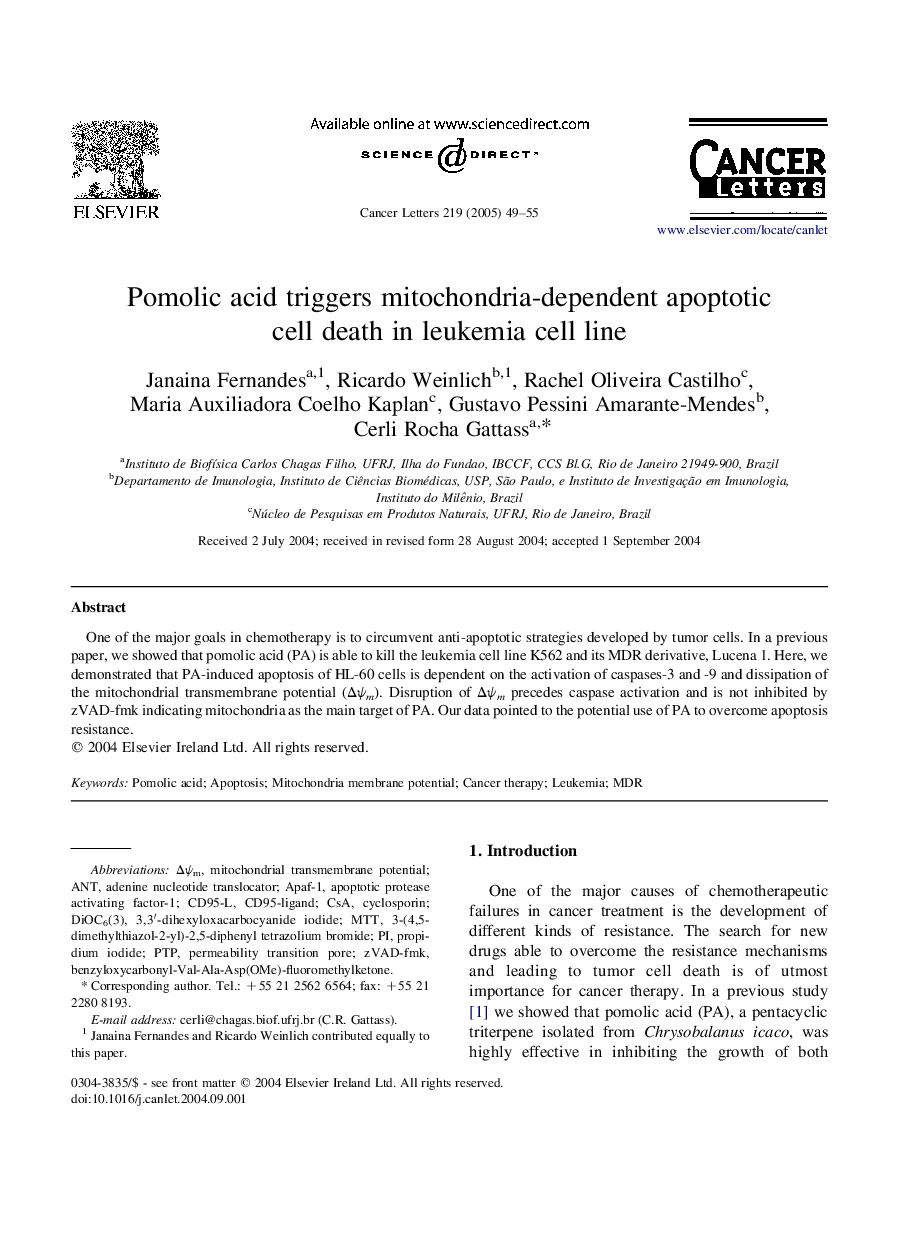| Article ID | Journal | Published Year | Pages | File Type |
|---|---|---|---|---|
| 10900513 | Cancer Letters | 2005 | 7 Pages |
Abstract
One of the major goals in chemotherapy is to circumvent anti-apoptotic strategies developed by tumor cells. In a previous paper, we showed that pomolic acid (PA) is able to kill the leukemia cell line K562 and its MDR derivative, Lucena 1. Here, we demonstrated that PA-induced apoptosis of HL-60 cells is dependent on the activation of caspases-3 and -9 and dissipation of the mitochondrial transmembrane potential (ÎÏm). Disruption of ÎÏm precedes caspase activation and is not inhibited by zVAD-fmk indicating mitochondria as the main target of PA. Our data pointed to the potential use of PA to overcome apoptosis resistance.
Keywords
APAf-1zVAD-fmkΔΨmPTPANTMDR3-(4,5-dimethylthiazol-2-yl)-2,5-diphenyl tetrazolium bromideDiOC6(3)MTTapoptotic protease activating factor-1Pomolic acidPermeability transition poreCSAadenine nucleotide translocatorApoptosisCancer therapyCyclosporinleukemiaMitochondrial transmembrane potentialMitochondria membrane potentialPropidium iodide
Related Topics
Life Sciences
Biochemistry, Genetics and Molecular Biology
Cancer Research
Authors
Janaina Fernandes, Ricardo Weinlich, Rachel Oliveira Castilho, Maria Auxiliadora Coelho Kaplan, Gustavo Pessini Amarante-Mendes, Cerli Rocha Gattass,
